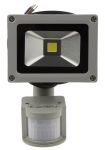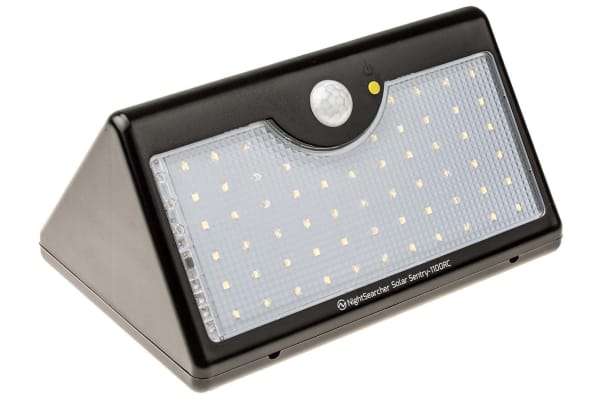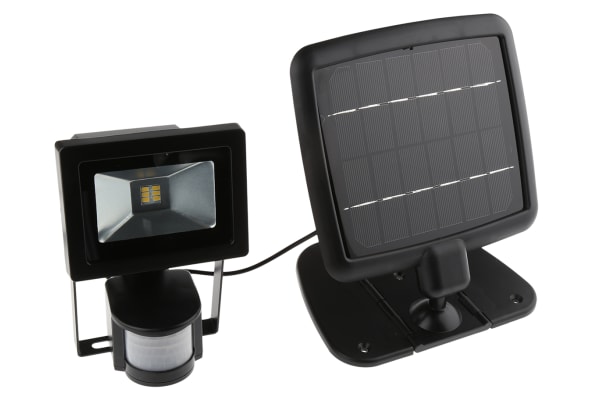Security Lights
Whether you need to secure a business or domestic premises, security lights are an excellent investment. They work by turning on a bright floodlight when their built-in PIR or microwave motion sensor is triggered. This has the benefit of discouraging potential intruders by alerting anyone nearby to their presence. It also has the benefit of better identifying the features of a potential intruder to a security camera. You can learn more in our complete guide to security lighting.The RS Range of LED security lighting offers sensor light models from leading brands, with solutions for any installation.How should I install security lights?LED floodlights should be installed in parts of your premises that are not well-lit at night. Sometimes referred to as LED wall lights, they are usually installed on a wall at a good height, to discourage any vandalism, and also so that their motion sensor can operate unhindered.Outdoor or Indoor?As they are meant to deter break-ins, LED floodlights are usually installed as outdoor security lights. As such, they normally have an IP Rating from IP54 to IP65 to protect them from the elements. However, a motion detector LED security light can also be useful for large indoor spaces, such as community halls and warehouses.How does the sensor work?Typically, a security light will have a motion sensor, allowing them to trigger when movement is detected.• PIR SensorPIR, or Passive Infrared Sensor, react when there is an increase in infrared energy, such as might be caused by human body heat. In principle, a PIR wall light has the advantage of only triggering when a human is present, rather than to environmental interference. PIR security lighting is often used for outdoor applications.• Microwave SensorMicrowave sensors are a motion sensor that rely on an emitted pulse of microwaves being interrupted by a moving object. Though these sensors are very effective, they can be triggered by the detection of environmental movement, rather than that of an actual intruder.• Day and Night SensorSometimes a permanently well-lit area can deter potential intruders. In this case, day/night sensors detect a lack of daylight, and turn on the attached security lighting accordingly. The disadvantage of this lighting setup is that it requires more energy. To combat this, solar panel powered lights combined with day/night sensors are increasingly popular. Solar security lights charge during daylight hours, and then using that energy to sustain the lighting source during the night.Day/night sensors are increasingly popular, charging the light during daylight hours, and then using that energy to sustain the lighting source during the night.
-
2 x 58 W, Anti-Corrosive Hazardous Area Light, 2, Fluorescent, Temp T4, 240 V ac
IDR2,514,947.53 -
RS PRO Floodlight, 1 LED, 10 W, 800 → 900 lm, IP65 PIR 85 → 265 V ac
IDR781,010.94 -
RS PRO, Solar Powered Floodlight, 10 W, 1100 lm, IP65 Day and Night Auto Sensor, Motion Sensor 3.7 V
IDR1,300,740.89 -
RS PRO, Solar Powered Floodlight, 3.5 W, 400 lm, IP65 Day and Night Auto Sensor, Motion Sensor 3.7 V
IDR404,875.40 -
RS PRO, Solar Powered Floodlight, 9 W, 1000 lm, IP44 Motion Sensor 7.4 V
IDR811,429.04 -
Solar Centre Eco Wedge, Solar Powered Floodlight, 4 LED, 50 W, IP64 PIR V
IDR504,835.57 -
Solar Centre Evo SMD SS9, Solar Powered Floodlight, 100 W, IP56 Motion Sensor
IDR1,041,138.14 -
Solar Mate, Solar Powered Floodlight, 45 LED, 2.5 W PIR
IDR2,044,725.66










